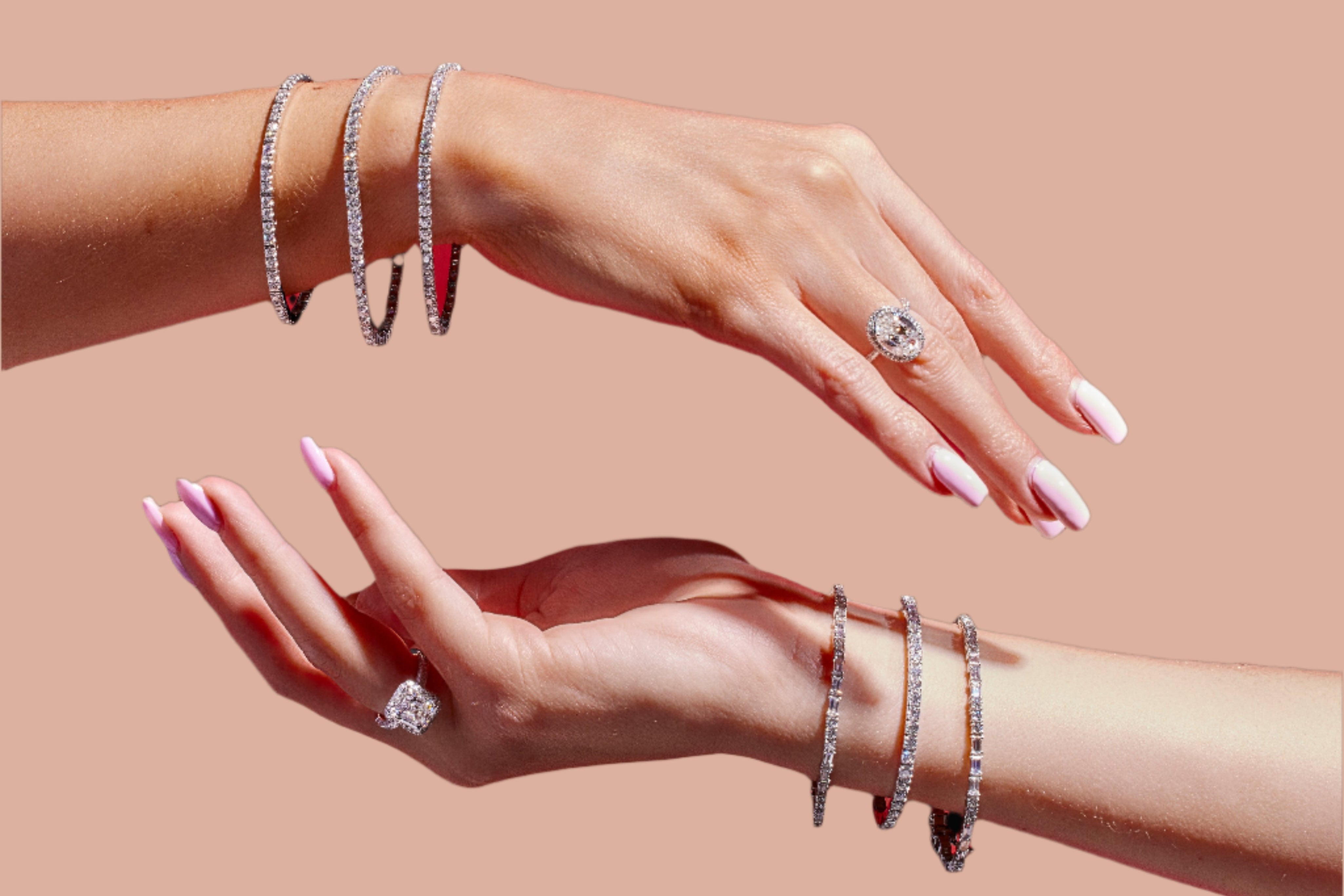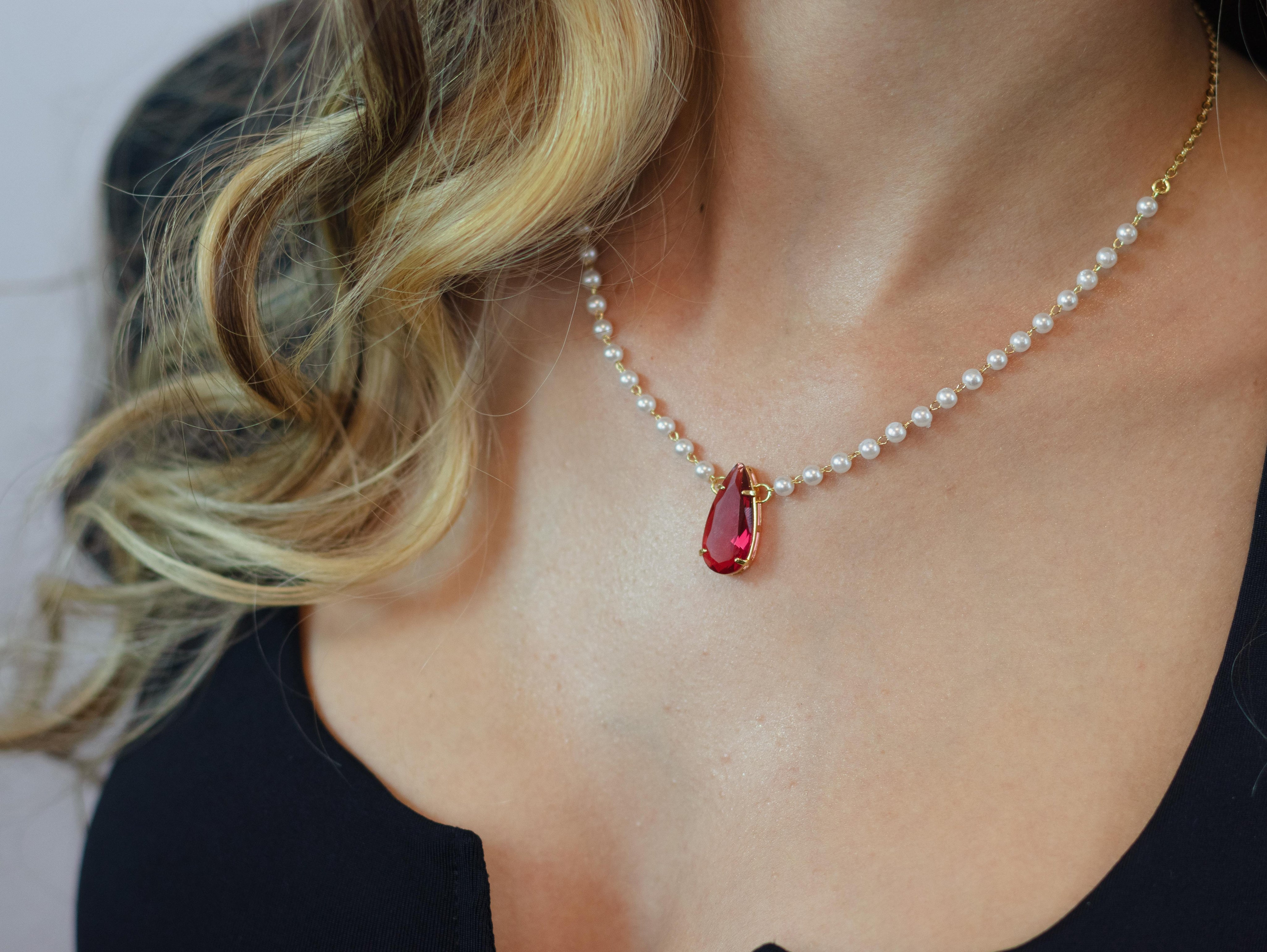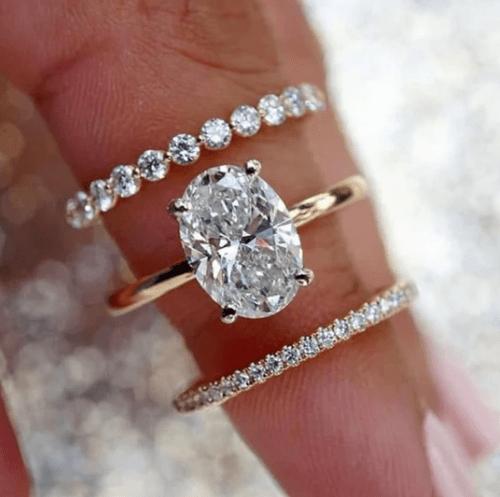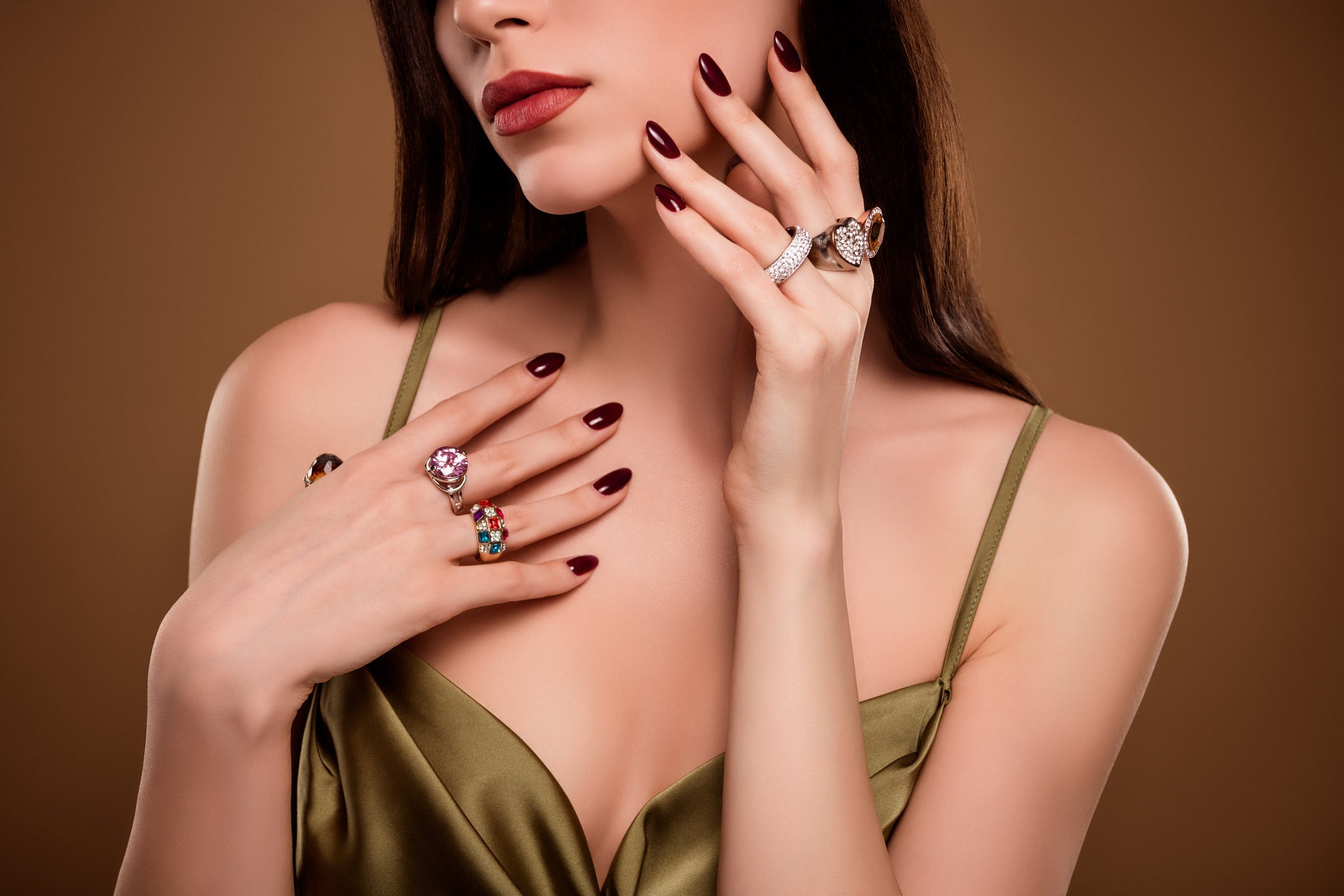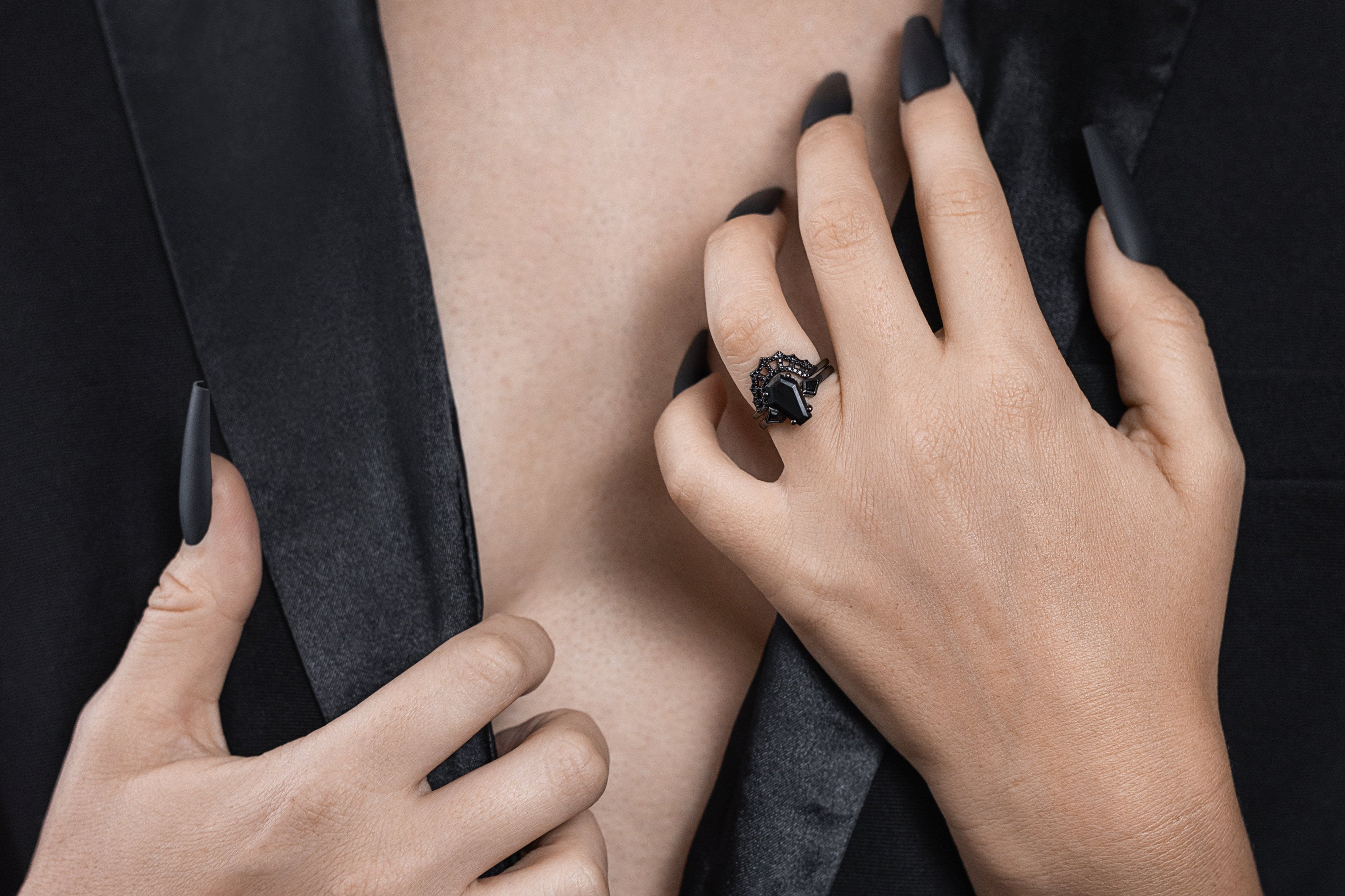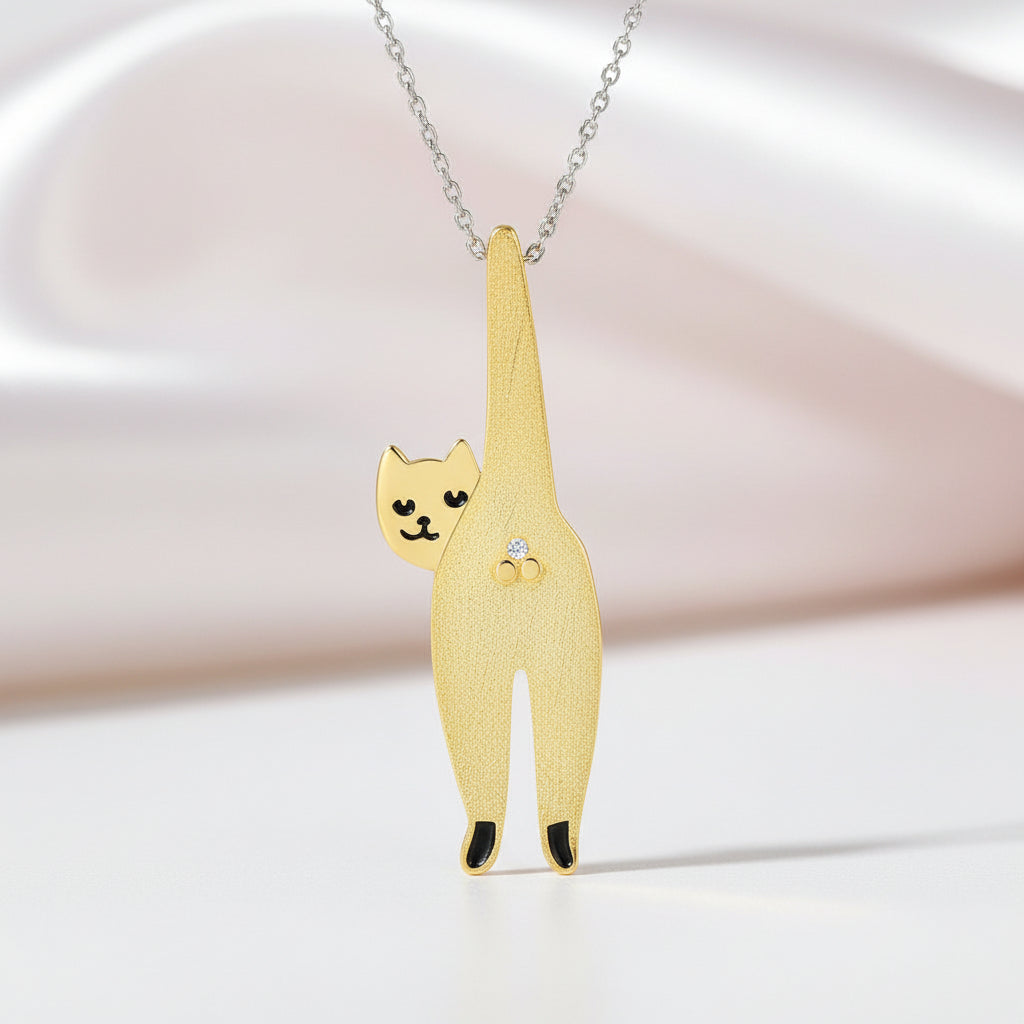Marilyn Monroe is often attributed with stating that, "Diamonds are a girl's best friend." While some may consider that to be true, the price tag for a diamond is not always the most appealing part.
The average price for a diamond based on carat weight alone is $2,384 for a 0.50ct or below diamond. This doesn't even take into consideration the cut, clarity, or color GIA scale used for determining a diamond's full worth.
Want to know how you can still rock a luxurious and beautiful diamond for a whole lot less? The answer is simple. A Sona Diamond.
What is a Sona Diamond and what are its features and benefits? In this guide, we'll cover all the details you need to know about a Sona Diamond. So, keep reading to discover more.
What Is a Sona Diamond?
A Sona Diamond is a form of simulated diamond that is crafted in a lab. Its creation relies on high-temperature and high-pressure specialized equipment.
A Sona Diamond is considered to be a simulated diamond that mimics the appearance of a natural diamond for a fraction of the cost.
A simulated diamond differs from a synthetic diamond in that a synthetic diamond actually shares the same physical and chemical elements as a natural diamond. A simulant diamond does not share the same chemical compounds.
Sona Diamonds are made from real diamond carbon. They have a core of diamond crystals embedded inside that gives the outer surface a real diamond overlay.
Comparison to Other Diamond Simulants
There are three other types of diamond simulants. The first is the cubic zirconia, then the Moissanite, and the CVD Diamond.
Cubic Zirconia
Cubic zirconia (abbreviated as CZ) is the most popular diamond simulant because it is the most affordable type of artificial diamond.
It is a man-made diamond from crystalline zirconium dioxide, the substance that bears its name. While cubic zirconia has a diamond-like appearance, the biggest downside of it is its sparkle will diminish with wear. A cubic zirconia's chemical compound is porous or not completely solid.
Outside substances and irritants in the atmosphere can get inside and discolor the stone. Over time the stone will lose its luster and change colors to a cloudy or milky yellow to brown tone while its surface is more prone to scratching and wearing down.
It has a hardness of 8.25-8.50 on the Mohs Scale. Its refractive index falls somewhere between 2.171-2.177.
Cubic zirconia is graded using an A rating system, which is only for machine-cut and mass-produced stones. An A or 1A to 5A (AAAAA) rating signifies quality. 5A is the best quality and 1A is the worst quality cubic zirconia.
Moissanite
Naturally occurring Moissanite is too rare and expensive for jewelry use. It is found in the craters of meteorites.
So, Moissanites are also a form of lab-grown diamonds and are the only gemstones that will pass the diamond test. They are made from a synthetic material called silicon carbide, which is commonly used to make abrasive substances for grinding wheels and sandpaper.
Moissanite's likeness to a real diamond is good for anyone looking for a diamond alternative for low-cost engagement rings as it does not carry a natural diamond's hefty price tag with it.
It is a very good diamond clone and can be cut and polished specifically to show more sparkle and shine than even a traditional diamond can muster up with a refractive index of around 2.65. Moissanites refract more light than a natural diamond, making them sparkle from every angle that catches the light.
A Moissanite has a hardness rating of 9.5 on the Mohs Scale, compared to a natural diamond's rating of 10. It will not chip, scratch, or lose its diamond-like sheen over time. When tested by a jeweler's diamond tester, a Moissanite stone could pass for the real thing.
CVD Diamond
A CVD Diamond undergoes a process called Chemical Vapor Deposition and is a man-made diamond. A methane gas combines in a chamber with a seed crystal from another CVD diamond. The carbon atoms break down to make diamond crystals that form into diamonds under heat and pressure.
CVD Diamonds have a refractive index of 2.27– 2.31, which is lower than a Moissanite. CVD Diamonds also look just like real diamonds. Their lab-grown diamond form is easier to create and less expensive than natural diamond mining.
Sona Simulated Diamond
A Sona Diamond is another alternative for low-cost engagement rings. They are also very diamond-like in appearance and boast many of the same qualities as the Moissanite.
A Sona Simulated Diamond is hand-cut and polished in a special lab to enhance its brilliance and shimmer with multiple colored facets. A Sona Diamond is scratch-resistant so it is ideal for everyday wear without the fear of worrying about losing a more expensive heirloom stone.
Although they are still beautiful like a diamond, a Sona Simulated Diamond will not pass with a jeweler's diamond testing tool. This should not stop you though from considering a Sona Simulated Diamond as a possible choice of diamond for a low-cost engagement ring.
It is important to note that any simulated diamond will appear flawless when compared to a naturally occurring diamond because they are engineered to be equal to, if not more, superior to the real deal.
Typically, a diamond simulant stone will have an extra twinkle to it. But it is often difficult to tell the difference between the two without a professional jeweler's tools. If you want a more brilliant and flawless diamond, a Sona Diamond is the way to go.
4Cs of Natural Diamond Rating
Unlike simulated diamonds, natural diamonds rely on the 4Cs rating for calculating their overall worth and value. The 4Cs established by the Gemological Institute of America or GIA are:
- Cut
- Color
- Clarity
- Carat
Using these 4 areas of comparison is how a diamond's price is set. We will go into some brief details about each of these areas below.
Cut
The cut of a diamond refers to the way it is shaped. There are more traditional or common cuts of diamond that are the preferred standard for diamond shapes. They include:
- Pear
- Round
- Princess
- Baguette
- Cushion
- Emerald
- Asscher
- Radiant
- Marquise
- Oval
Some less common but still favored diamond cuts may include the Heart cut, the Triangle cut, the Star cut, the Briolette cut, the Rose cut, the Old Mine cut, and the Old European cut.
Color
Grading a diamond's color is another important part of a diamond's worth. Color grades can be anywhere from a D to a Z grade for a diamond. A D grade is the purest white coloring and most desirable and a Z grade is at the very bottom where a diamond has a brown or yellowish tint.
The color of a diamond in relation to the GIA grading scale is different from an actual colored diamond, such as a natural mined pink or blue diamond.
Clarity
All-natural diamonds will have some form of internal or external flaws unless they are certified as flawless. However, this will drive the price up much more due to the superior quality.
Clarity denotes a diamond's visual appearance and transparency. If a diamond is hazy or cloudy or has any marks, lines, or spots on its surface, this can impact its value.
The clarity grading scale rates a diamond higher for having few to no visible marks or imperfections. A high clarity diamond falls into the grade of FL (Flawless) or IF (Internally Flawless).
VVS1 and VVS2 (Very Very Slightly Included) diamonds have very few flaws affecting their clarity, VVS1 flaws are not detectable even with 10x magnification and VVS2 flaws are still undetectable to the naked eye but are visible with magnification.
VS1 and VS2 stand for Very Slightly Included. VS1 and VS2 inclusions are very minor with VS2 diamonds having a few more than their VS1 counterpart.
SI1 and SI2 diamonds are Slightly Included. Again, the blemishes on the surface are more noticeable. SI2 diamond inclusions are more noticeable than SI1 diamonds.
I1 and I2 diamonds are Included, meaning they have very noticeable marks or areas of imperfection. I2 diamonds again have the most noticeable marks compared to I1 diamonds.
Carat
The size and weight of a diamond correlate to its carat grade. Smaller carat ranges of 0.10-0.40 will be about 5mm or smaller. 0.50 or half-carat diamonds to 0.75-carat diamonds are still on the smaller side around 5.2 to 5.8mm.
Anywhere between a 1.00-carat (6.5mm) to a 1.50-carat (7.4mm) diamond is preferable for a moderate-sized diamond. 2.00-carat diamonds measure approximately 8.2mm. Diamonds can exceed 5.00 carats or more, but these are cost-prohibitive to the average consumer.
The cut can also affect the shape and carat weight of a diamond as more intricate diamond cuts shave off more of the diamond's edges and corners in some places.
Cost Comparison of a Sona Diamond vs a Natural Diamond
While natural diamonds rely on the 4Cs (Cut, Color, Clarity, and Carat) to determine their worth, a Sona Diamond is primarily sold by its size and weight.
It is difficult to do a blind comparison of the Sona Diamond to a natural diamond because of all of the different factors that go into pricing out a real diamond, but let's compare a natural diamond and its Sona Diamond equivalent here.
A Sona Diamond Ring, for instance, that is about a 2.00-carat weight round-cut simulated diamond would cost just a little over $500.
A natural diamond's price can fluctuate wildly based on its cut, clarity, color, and carat ratings. This means that the shape of the diamond, its clearness, coloring, and whether or not it is flawless all play a part in its value.
According to a 2022 diamond price chart, a 2.00 carat diamond on its own could cost anywhere from $8,000-$70,000. With the price per carat at $4,000-$35,000. That's a pretty wide range.
On the other hand, using specific details, such as clarity and coloring, will yield better results. For example, a 2.00 carat round diamond with a color rating of F and a clarity of VVS1 (Very Very Slightly Included) can cost anywhere from $30,000-$40,000.
A natural 2.00 carat round-cut diamond with a color rating of E and a clarity of IF (Internally Flawless) would be between $45,000-$50,000. The same 2.00 carat round-cut diamond with a color grade of D and clarity of VVS2 (Very Very Slightly Included) would be between $35,000-$55,000.
Why Are Sona Diamonds So Appealing?
A Sona Diamond, like other forms of simulated diamonds, has many great qualities. As we have already established, a Sona Diamond is:
- Cost-effective vs a natural diamond
- More radiant than a natural diamond
- Very durable compared to a natural diamond
- Made to be a high-quality diamond simulant
- A better overall value diamond substitute
On top of all of this, Sona Diamonds are conflict-free, meaning they do not come from war-torn areas where the illegal mining and selling of diamonds finance the war efforts of warlords and their militant armies.
Although certain measures have been made to ensure this is no longer the case, inherited family diamonds may have been a part of this movement. This could be a potential issue when it comes to an heirloom diamond with a questionable history.
Sona Diamonds are also sustainable for the environment as they do not use invasive methods of mining that destroy the ecosystems around them the way natural mined diamonds may still do in certain areas.
A Sona Diamond, along with other lab-grown diamond simulants, are truly ethically-sourced diamonds because their origin is verified and they are not mined. For environmentally-friendly and socially-conscious individuals, Sona Diamonds are a wonderful choice.
Stunning Low-Cost Engagement Rings and So Much More
As you can see there are many options when it comes to beautiful and quality diamond alternatives for your engagement ring or wedding ring at Black Diamonds New York.
But Black Diamonds New York doesn't just do rings. We also have bracelets, earrings, necklaces, and jewelry sets too. In an array of gorgeous Sona Diamond and other diamond simulants.
You won't have to spend a lot to look amazing. Black Diamonds New York provides affordable luxury. We also do custom orders for those who want more bling in their ring.
Contact us today for your custom VIP Consultation.




